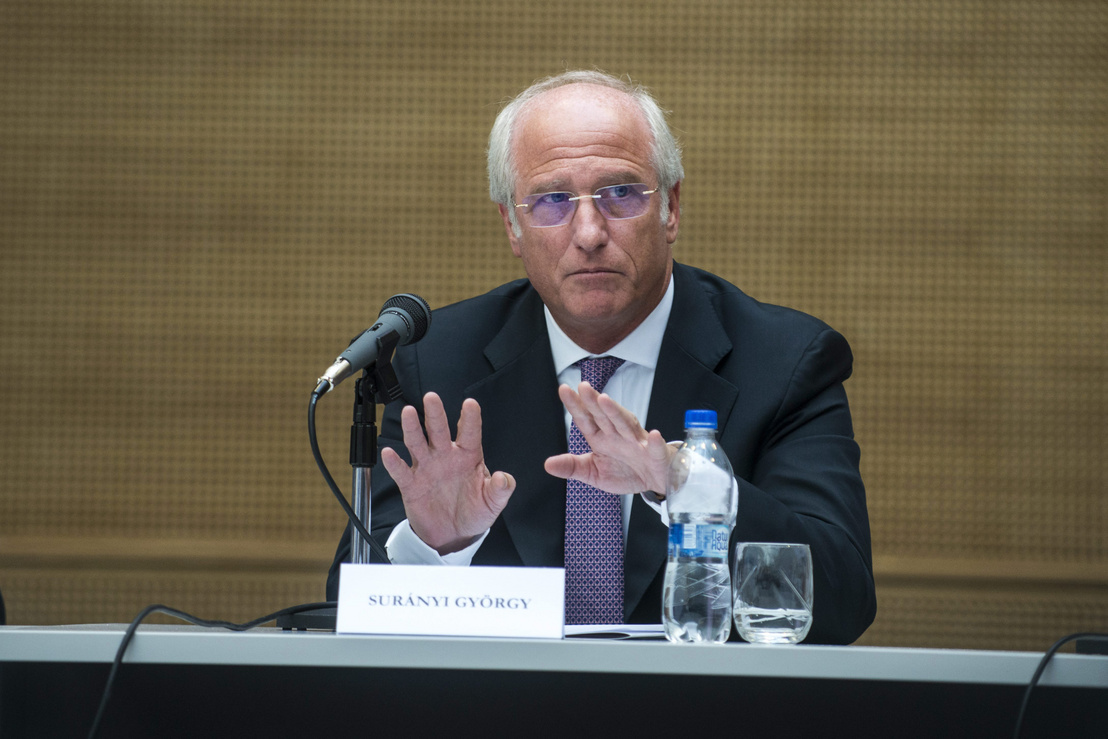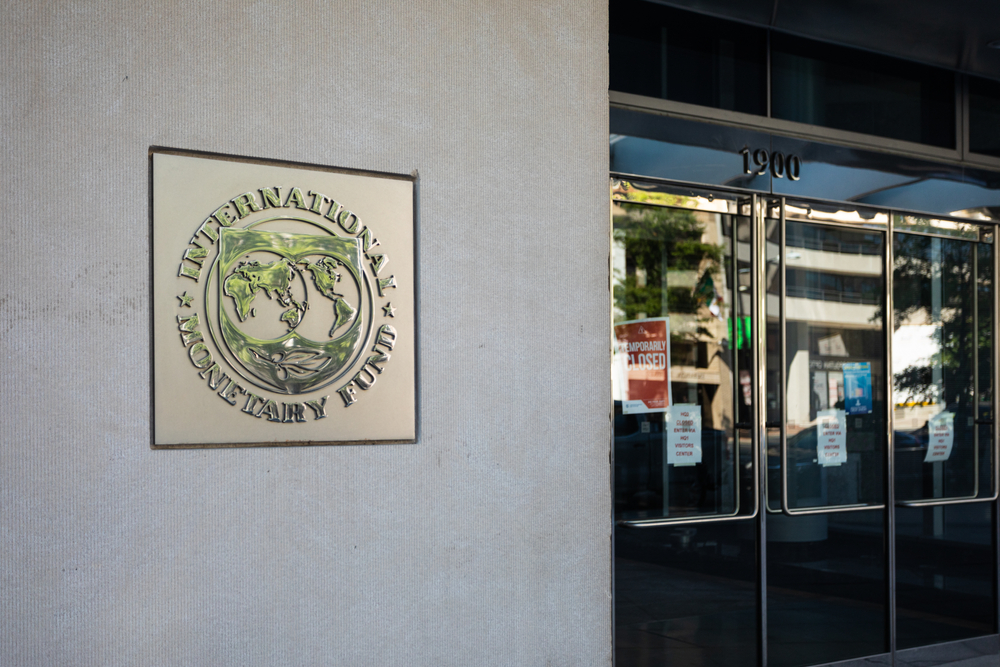Surányi: Hungary's Highest Inflation in the EU is Largely Self-inflicted

György Surányi
Photo by János Marjai / MTI.
Misguided fiscal and monetary policies have been fueling inflation, but Hungary is not in a financial crisis in the classical sense, though imbalances must be addressed for the sake of stability and sustainable economic development, according to György Surányi, professor of finance at Corvinus University, and a former governor of the National Bank of Hungary.
Lax fiscal and monetary policies in recent years have created unsustainable growth and helped propel Hungary to the unenviable position at the top of the European Union’s inflation league. However, the reduction in foreign-currency debt and full employment means that Hungary is not in crisis, as Hungary could finance itself from the markets, albeit expensively, Surányi said.
Speaking to the foreign press on January 13, the day news was released that headline inflation in December hit 24.5% year-on-year, the highest figure since 1996, the former central banker said the origins of the current problem go back long before Russia’s war in Ukraine.
“Contrary to the declarations of the Hungarian government, the current problems and tensions do not originate from the sanctions [on Russia] or the war against Ukraine, but the deep roots of this development arise from as early as 2017,” he said.
It was in that year that the Hungarian government and the MNB decided to maintain easy conditions to boost growth (in the run-up to the 2018 elections), causing the economy to overheat.
This followed some years of ultra-low inflation when the central bank reduced the reference rate to -0.25%. “Rightly so,” said Surányi, because this helped lending and, at least in theory, boost investment.
“But they kept this minus 0.25% reference rate from the beginning of 2017 up to the summer of 2021. During this period, the real rate of interest became, quarter by quarter, deeper in the red, in the negative. As inflation accelerated, so the negative rate of interest climbed to between 5-6%,” he noted. As a textbook example of how to induce inflation, this could hardly be bettered.
“If there is such a serious negative real rate of interest, no one will save money, and everyone will demand credit. As a result, the net demand generated by the monetary policy is definitely up in the sky,” Surányi argued, pointing to the data.
“The annual average credit growth between 2017 and 2021 increased to 16-18% per annum. This is obviously not sustainable, obviously overheats the economy, and obviously deteriorates the external account. On top of that, the central bank injected an enormous amount of liquidity into the system, the so-called ‘Credit for Growth’ scheme, and the growth bond issuance,” he said.
Justified Initially
Once again, the policies to boost credit were justified when introduced earlier, since credit had been contracting.
“Up to about 2017, this was justified [...] it was understandable if the central bank wanted to facilitate credit growth in the country. But, from the beginning of 2017, the inherent, organic credit growth had already reached 10% per annum, but they kept continuing the injection of central bank liquidity,” Surányi said.
The result has been the creation of “tremendous excess liquidity,” all made worse because much of the credit came with a fixed, zero interest rate for 10 and 15 years maturity, thus creating a dramatic, open, unhedged interest rate position, which is currently responsible for a dramatic loss for the central bank and the public sector as a whole, he argued.
All this was compounded because having “foolishly” declared that the exchange had not played any role in influencing the current inflation and inflation expectations, the central bank neglected the forint’s decline against world currencies, thereby playing a “serious role” in accelerating inflation.
“This is a Hungarian innovation. I have never, ever heard of such stupidity in a small, open economy. Even a closed, big economy cannot allow themselves to declare that they are not interested in the exchange rate movements,” Surányi thundered.
Another critical factor inhibiting economic development during the past decade and more has been weak productivity growth.
“The average productivity growth in Hungary between 2010 and 2022 was not more than 1% annually,” Surányi noted. “Once an economy is operating at 1-1.2% annual average productivity growth, and there is no excess labor supply involved, the sustainable economic growth cannot be more than 2-2.5%.”
True, the low-interest rates and cheap credit boosted economic growth from 2017 to 4.5-4.6% for three years, but this was merely transitory.
“It was not sustainable because this growth rate was roughly twice as fast as the potential growth rate of the Hungarian economy [given the low productivity trend],” he reasoned.
COVID Downturn
The onset of the Coronavirus pandemic in March 2020 brought a sudden economic downturn, with the knock-on effect of temporarily curbing inflation.
However, because of the fiscal and monetary policies up to that point, inflation had already grown to 4.7% at the beginning of January 2020, already well out of line with trends in the eurozone.
“The external shock of the pandemic suppressed inflation, but once the economy [began to recover], inflation continued to increase. As a consequence, in summer 2021, there was no war, no energy price crisis, [yet] Hungarian inflation reached almost 6% per annum, whereas the European average within the monetary union was at 1.5-1.6%. So, there was not any externally driven inflation in the country. It was completely driven by domestic mismanagement,” Surányi said.
In parallel, the strongly positive trade and current account balances posted up to 2016 began to decline afterward, turning strongly negative last year due to the energy price surge.
Yet, for all the concerns and the need to address them, the economist – who was governor of the MNB during the post-Communist crisis years of the mid-1990s at the time the so-called Bokros economic stability package was enacted – says Hungary is not in a “near-crisis situation” because of the “relatively disciplined” macro-policy between 2009-2016 which brought the foreign-currency denominated net external debt of the country down to a “sustainable, solid” level.
“Back in 2009, the net external foreign-currency-denominated debt stood at around 55-60% of GDP; today, it is down to about 15% of GDP. So, it’s a solid position, and it gives a relatively big room for aneuvering for the policymakers without threatening the external sustainability of the country,” Surányi reasoned.
Indeed, even if Hungary fails to access its European Union funding because of the rule of law concerns in the European Commission, Surányi believes this is “not a life and death type issue” since Hungary could borrow, at a price, on the capital markets. (A point of view where he agrees with Prime Minister Viktor Orbán.)
“Hungary is paying right now a 4% plus risk premium over the [German] Bund reference rate, which is extremely expensive. It is significantly higher than countries with similar credit ratings have to pay [….], but the private capital market is happy to finance it,” he pointed out.
Still, with all the negative economic tendencies needing attention, including core inflation at roughly four and a half to five times that in the eurozone, Surányi is not optimistic, certainly in the short term.
“In contrast to the expectation and declaration of the government, I do not see any chance of avoiding recession, at least for 2023,” he concluded.
This article was first published in the Budapest Business Journal print issue of January 27, 2023.
SUPPORT THE BUDAPEST BUSINESS JOURNAL
Producing journalism that is worthy of the name is a costly business. For 27 years, the publishers, editors and reporters of the Budapest Business Journal have striven to bring you business news that works, information that you can trust, that is factual, accurate and presented without fear or favor.
Newspaper organizations across the globe have struggled to find a business model that allows them to continue to excel, without compromising their ability to perform. Most recently, some have experimented with the idea of involving their most important stakeholders, their readers.
We would like to offer that same opportunity to our readers. We would like to invite you to help us deliver the quality business journalism you require. Hit our Support the BBJ button and you can choose the how much and how often you send us your contributions.








